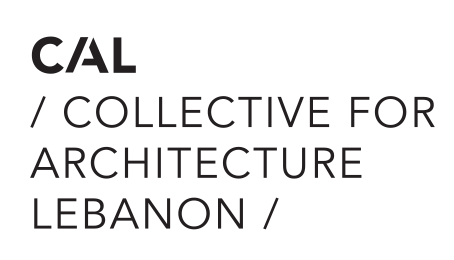The Land Remembers
Lebanese Pavilion at the
Venice Architecture Biennale 2025
EUR - BANQUE BEMO SAL
ACCOUNT NAME: COLLECTIVE FOR ARCHITECTURE LEBANON
IBAN: LB91 0093 0000 0035 0264 4366 1EUR
BENEFICIARY BANK: BANQUE BEMO SAL
SWIFT: EUMOLBBE
Correspondent Bank Details: Deutsche Bank AG (Frankfurt am Main)
SWIFT: DEUTDEFF
Account Number: DE53 5007 0010 0954 6805 00
Alternatively see below for bank details.
USD - BANQUE BEMO SAL
ACCOUNT NAME: COLLECTIVE FOR ARCHITECTURE LEBANON
IBAN: LB41 0093 0000 0035 0264 4366 1USD
BENEFICIARY BANK: BANQUE BEMO SAL
SWIFT: EUMOLBBE
Correspondent Bank Details: The Bank of New York Mellon (New York)
SWIFT: IRVTUS3N
Account Number: 8900291176
Curatorial Statement
Lebanese Pavilion at the 19th International Architecture Exhibition of La Biennale di Venezia
The Land Remembers
The Land Remembers, the Lebanese Pavilion at the 19th International Architecture Exhibition of La Biennale di Venezia, presents a fictional ministry – The Ministry of Land Intelligens –dedicated to healing the land from ecocide and to building a dynamic archive of this intentional destruction. It asserts that, before architecture, there is land and that architects must take on a more active role in our engagement with the natural environment. The pavilion treats with urgency the crisis of ecocide and is, therefore, not merely an exhibition but a call to action – a space for activism that confronts visitors with the stark reality of the intentional devastation of the natural environment. The Land Remembers invites them to participate in shaping an alternative future where non-humans and humans both can thrive.
Lebanon is on the brink of losing its very essence due to decades of war, unchecked urbanization, and political instability. Environmental degradation has reached catastrophic levels, accelerated by warfare and the deliberate destruction of nature. Land that has sustained life for millennia is now poisoned – its soil and water contaminated by heavy metals, incendiary weapons, debris, and the deliberate, targeted destruction of agricultural fields and groves. These acts of ecocide have destroyed entire communities, displacing them and rendering once-thriving landscapes into barren, uninhabitable wastelands. For example, in 2024, the increased use of white phosphorus devastated vast stretches of land, leaving behind a toxic legacy that may never be reversed. The systematic erasure of Lebanon’s ecology is not only an environmental crisis – it is an existential issue.
At the core of our research lies a fundamental question: how can we heal the land to build for future generations?
The Land Remembers argues that architecture must go beyond merely responding to destruction. Before seeking to rebuild, architects must adopt an activist role in the face of environmental devastation, prioritizing the healing of the natural environment. By structuring the pavilion as an activist ministry, we set up a framework for urgent action, advocating for architects to assume agency in safeguarding the land. The built environment is inextricably linked to the natural world, and in times of conflict, architecture plays a pivotal role in shaping how we rebuild for future generations.
The Ministry of Land Intelligens, which advocates for policy change, is structured into four departments:
1. The Department of Ecocide Reports
Documenting ecocide to build an evolving archive of the land’s wounds, tracing environmental destruction as a forensic act of remembrance and accountability.
2. The Department of Counter-Mapping
Challenging dominant cartographies by redefining the narrative of the land’s condition, by uncovering erased landscapes.
3. The Department of Endemic Species
Safeguarding biodiversity through seed preservation and ecological stewardship, ensuring that the DNA of the land endures, adapts, and regenerates beyond cycles of exploitation.
4. The Department of Strategic Healing
Developing strategies for ecological restoration rooted in indigenous knowledge, reactivating natural processes to heal damaged ecosystems and to restore balance.
The pavilion is a living organism that embodies the resilience of the land it represents. The exhibition structure itself is built from compacted soil bricks embedded with wheat seeds, one of the most prevalent crops in the world, first domesticated in our region. The bricks are laid out in the shape of a cross dividing the space into four areas, one for each department of the fictional ministry. Over the course of six months, these bricks will sprout, symbolizing nature's intelligence to regenerate and Lebanon’s legacy as the birthplace of the DNA of wheat, anchoring the historical significance of Lebanon's natural environment, which is being deliberately targeted.
As visitors move through the ministry’s four departments, they are confronted with a choice: whether to support the ministry’s agenda by signing a petition. This act transforms the pavilion from a space of observation into a space of activism, compelling engagement beyond Venice and into real-world advocacy.
The Ministry of Land Intelligens will continue to operate beyond Venice, amplifying its call for action. The publication accompanying the pavilion is the dynamic archive of the ministry – a living document that collects research, testimonies, and strategies for healing. Through this work, the ministry builds a knowledge network to ensure that the destruction witnessed today does not define tomorrow.
Lebanon’s story is a microcosm of a larger global struggle. The Land Remembers is a reminder that the earth holds both memory and vital resources. To safeguard them and our future, we must urgently redefine our relationship with the land.

